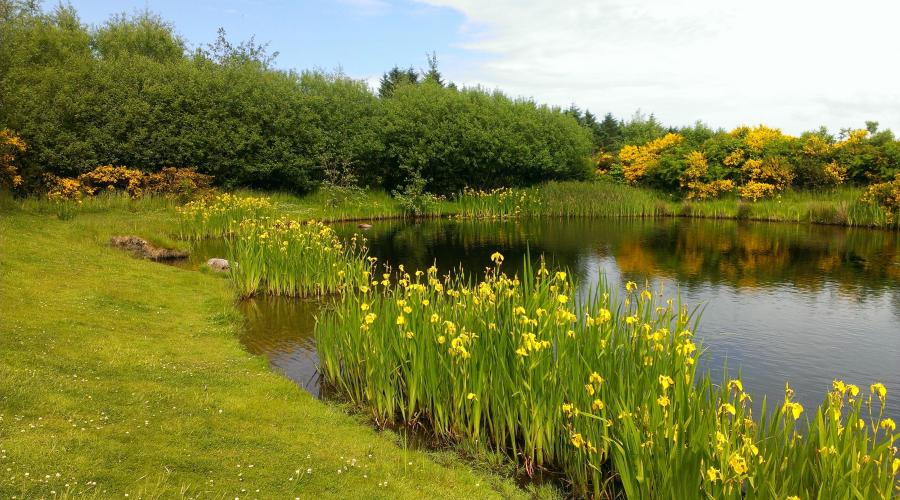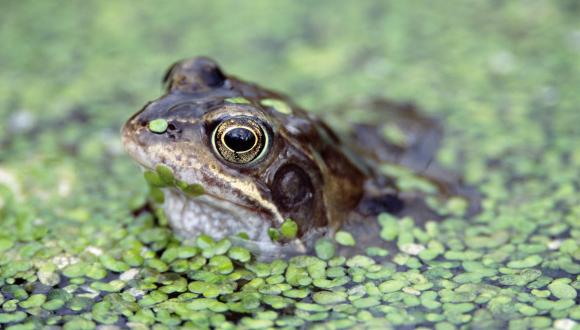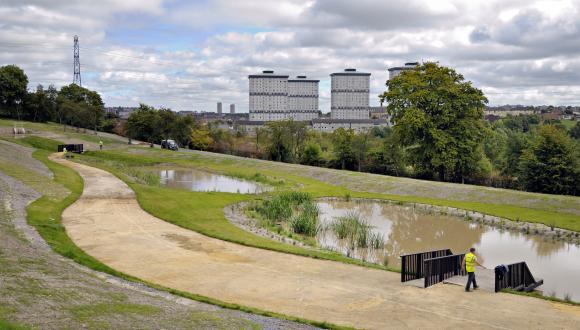
Frogs flourish in urban ‘SuDS’ ponds
11 April 2024
Networks of urban drainage ponds not only help to control surface water in our towns and cities, but they also support the genetic diversity of frogs, according to a new report.
Researchers from NatureScot and the University of Salford studied 34 common frog populations in and around Inverness to find out if the frogs that breed in sustainable urban drainage systems (SuDS) suffered from lower genetic diversity than rural frog populations.
The study found that in fact the SuDS ponds had the same levels of genetic variation as rural ponds, with no evidence of inbreeding in any of the populations studied.
It’s thought that this could be because these relatively new SuDS ponds are often built alongside nature-rich green spaces, which offer good breeding habitat and connectivity, allowing frogs to move between ponds and helping to conserve genetic variation in the species.
SuDS use natural elements to manage rainfall, helping to reduce flooding, improve water quality, and enhance biodiversity. They achieve this by lowering flow rates, increasing water storage capacity, and allowing water to soak into the ground, reducing pollution to watercourses.
Lead author Dr Robert Jehle of Salford University explained: “When we think about wildlife we usually think about species and habitats, but genetic diversity underpins them both. Having a diverse population allows species to adapt and to be resilient to threats such as climate change. However, isolation can lead to inbred populations that can result in high rates of birth defects and individuals that are more susceptible to disease.”
NatureScot Biodiversity Evidence and Reporting Manger, David O’Brien said: “SuDS can be great places for wildlife. Not only can they offer food, shelter, and breeding places for amphibians, they offer opportunities to engage with nature, right by your doorstep.
“And the introduction of green ‘corridors’ across our towns and cities is also helping people and wildlife. We can walk and cycle in these natural spaces, while lots of species use them to travel too. Being able to move around towns allows frogs to colonise new ponds and prevents inbreeding.”
In rural areas of Scotland as a whole, on the other hand, changes in agricultural practice in the 20th century have led to heavy losses of freshwater ponds through infilling, pollution, and natural succession. However, many farmers, crofters and estate managers are now creating new ponds on their land to provide habitat for an array of amphibians, including the rare great crested newt, a species native to central and southern Scotland as well as parts of the Highlands.
Like many scientific reports, much of the data came from citizen scientists. Anyone interested in helping to increase knowledge and understanding of amphibians, can report sightings of frogs, toads and newts using Recordpool website or other apps.





